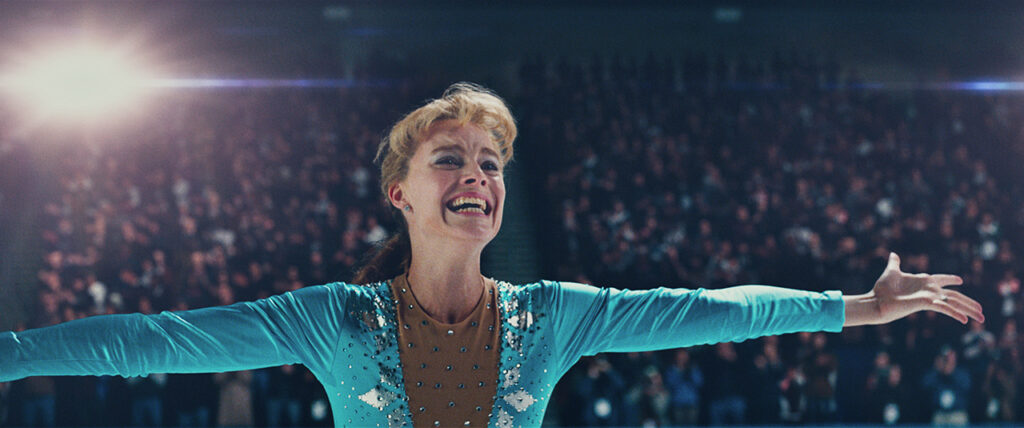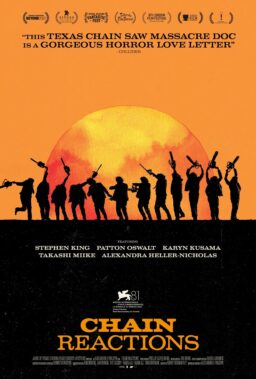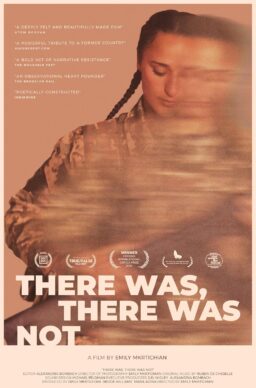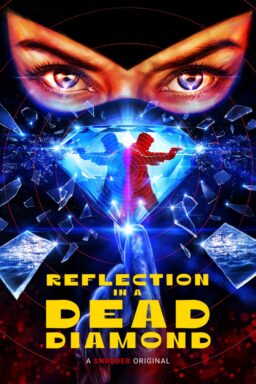We re-watched the scene over and over again, frame by frame, analyzing every subtle detail as if it were the Zapruder film.
Tonya Harding glides backward on the ice on her left foot, gaining momentum to set up for one of her trademark, powerhouse jumps. The announcer calling the figure skating competition tells us Harding is about to do a lutz. But wait—just as she’s reaching back to launch her petite frame into the air, the weight on her foot shifts slightly from the outside edge of her blade to the inside edge.
That’s not a lutz at all. That’s a flip.
It’s the kind of detail the average viewer wouldn’t notice while watching the darkly comic biopic “I, Tonya.” But it’s exactly the kind of thing that catches the eye of a real-life figure skating champion.

Nicholas LaRoche won the 2002 men’s junior national championship—the second-highest level of competition in the United States—at age 18. Now, at 34, he’s a highly sought-after coach in Southern California for both competitive figure skaters and hockey players hoping to improve their speed and power. (Full disclosure: My 8-year-old son has been one of his hockey students.)
Besides being an elegant skater and dedicated coach, LaRoche is also a hilariously opinionated guy. So I knew he’d be the perfect person to watch Craig Gillespie’s film with me to analyze how accurately it depicts the sport to which he’s devoted his life. That’s exactly what we did on a Sunday night over a bottle of red wine alongside his longtime partner, who’s also a former figure skater.
Turns out, LaRoche learned a thing or two from Margot Robbie’s acclaimed performance as the disgraced skating star: “I respect Tonya a lot more now because the image that was portrayed my whole life was very derogatory, and watching from the movie, what she lived and went through makes sense,” he said. “It makes me look at her differently.”
Given the abusive home life Harding endured—first with her cruel and demanding mother (Allison Janney), later with the volatile ex-husband who caused her downfall, Jeff Gillooly (Sebastian Stan)—it was amazing she could get out on the ice and skate for years at such an elite level, LaRoche said.
“Skating is hard enough. And it’s so stressful. And you get one shot, you know, and in that one shot it’s do or die. You make it or break it,” he said. “I have a very different respect level.”
LaRoche, who was just 10 years old and starting out as a skater when Harding achieved infamy for her tangential role in the 1994 attack on rival Nancy Kerrigan, also gained an appreciation for Harding’s athleticism from watching “I, Tonya.” He said she “jumped like a man … strong, confident and powerful.”
“She could have competed against a man in that Olympics. Honestly. To do a triple axel? There’s four ladies in the United States to ever do that. It’s incredible,” he said. “When she skated, she owned it. It was hers. And it throws my mind in a loop watching this whole scenario because I’m like: ‘Why? You’re so good.’”

That notorious leg-whacking landed Harding with a lifetime ban from the sport, even though her then-husband, Gillooly, was the one who orchestrated it. But it also changed figure skating in myriad ways, from the level of security skaters now enjoy at major events like the national championships (“Where were her coaches?” LaRoche wondered aloud as the attack on Kerrigan played out) to the amount of enthusiasm from spectators.
“It took it from a figure-skating-is-great level to something so big that I felt like U.S. Figure Skating didn’t know what to do with it,” he said. “And that’s where we were lucky to have Michelle (Kwan). We were lucky to have Sasha Cohen, Kimmie Meissner. Because those people carried it. They were at the top of the ladder.”
But one dynamic that’s remained true from the days when Tonya and Nancy were household names: The systematic drive to find skating stars who are not only excellent at their sport but also beautiful and marketable. With her frizzy, blonde ponytail and chintzy, homemade dresses, Harding always fell short compared to the polished Kerrigan, and judges routinely marked her down for her working-class image. Today’s top skaters “look like models,” LaRoche said, in elaborately beaded costumes that can cost as much as $10,000.
“Look at Gracie Gold’s face. Look at Alissa Czisny’s face. They’re amazing skaters, both of them. They’re drop-dead gorgeous,” he said. “That’s who they want. They want their marketability. They want their income to come back to them on whoever can be endorsed.”

LaRoche was taken aback, however, by Janney’s vivid and vicious portrayal of Harding’s mother, LaVona, who abused her verbally and physically in the name of making her a champion. That was nothing like his own experience, and thankfully it’s not the kind of behavior he sees now in the parents of skaters he trains.
“When I grew up skating, my parents were very supportive. They sold their house three times. They did anything and everything possible to make it work. Never threw it in my face,” he said. “As an adult now, I get it. When I was 12 or 13 or 14, no, I didn’t understand. But watching that mother degrade her—I can’t fathom.”
LaRoche said he’d actually recommend “I, Tonya” to folks in the figure skating world as a cautionary tale of toxic parenting. One of the first times we see LaVona Harding, she’s standing on the ice in shoes, not skates, smoking a cigarette and profanely demanding that a coach (Julianne Nicholson) start training young Tonya immediately.
“Your parents should not be that involved. It’s your coach and your skater who make success happen,” he said. “And I don’t want to say they shouldn’t be involved. They should not be telling a coach what to do. That’s what the coach is for, you know? Support your kid.”
And the depiction of nutrition isn’t exactly something aspiring skaters should emulate either, LaRoche said. We see an on-the-go Harding cramming peanut butter and jelly sandwiches in her mouth; later, when she opens her freezer, it’s packed full of Dove ice cream bars.
“At that level, you don’t go eat peanut butter and jelly. You don’t eat ramen. I mean, even if you’re poor, an athlete like that can’t skate on ramen or peanut butter,” he said. “You have to feed your body to perform.”












